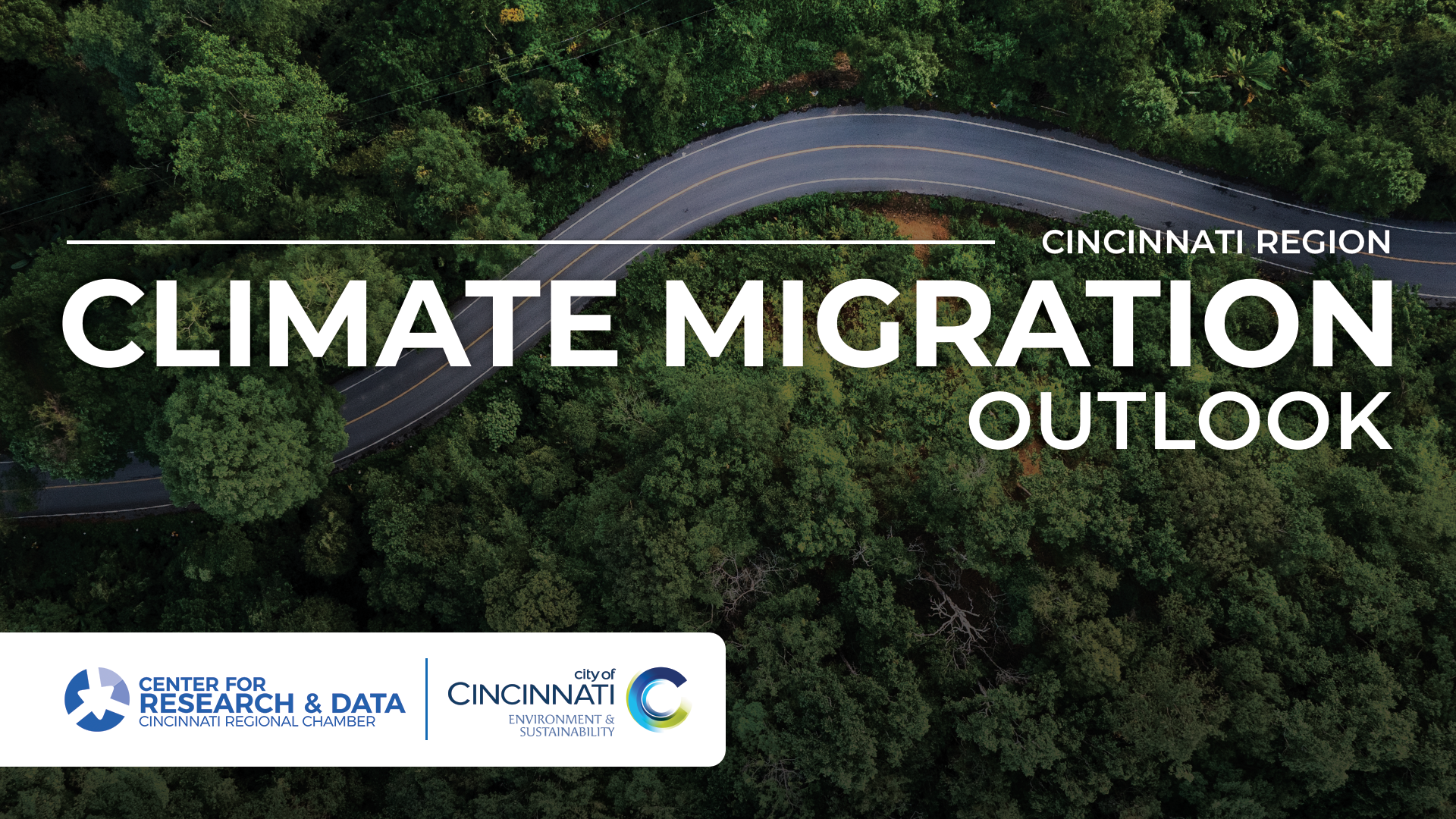Last week, leaders from across our region gathered to explore one of the most important questions shaping Cincinnati’s future: how will climate migration affect our community, and how can we prepare? Participants from housing, transportation, workforce, government, and nonprofit sectors joined long breakout sessions to examine possible scenarios of migration and regional collaboration. Across the conversations, one theme was clear: planning early is essential if Cincinnati is to harness the opportunities of climate migration while avoiding unintended challenges.
During the event hosted by Green Umbrella, and showcasing work from the City of Cincinnati’s Office of Environment and Sustainability and HDR, Brandon Rudd, Director of the Center for Research and Data, shared preliminary findings from the forthcoming Cincinnati Region Climate Migration Outlook. This report examines how climate change–driven migration could reshape the region’s population, economy, and infrastructure by 2050. It builds on national research, local demographic trends, and case studies from other U.S. cities to provide a forward-looking view of what climate migration might mean for Cincinnati.
Globally, the World Bank projects that up to 143 million people could be displaced within their own countries by climate change by mid-century. In the United States, more than 13 million people may be forced to move due to sea-level rise alone. While the precise impacts on individual cities remain uncertain, Cincinnati’s relative advantages—abundant freshwater, comparatively lower climate disaster risk, and established resilience—position it as a potential climate destination. These strengths mean our region could attract people seeking safety, stability, and quality of life.
The report also stresses that advantages alone will not guarantee success. Cincinnati faces headwinds, including housing affordability challenges, an aging population, and slowing international migration. If left unaddressed, these factors could limit the region’s ability to welcome and retain new residents. The lessons from other cities are instructive. Houston’s post-Katrina experience highlighted the importance of linking housing with transportation access. Orlando and Buffalo demonstrated how social networks influence relocation patterns, while Duluth’s climate-messaging campaign revealed the risks of overlooking equity in attracting newcomers.
The report underscores that migration will likely be gradual and shaped by “pull” factors such as affordability, job opportunities, and quality of life—rather than sudden, large-scale displacement. However, climate disasters and economic disruption in other parts of the country could accelerate inflows, creating periods of rapid change. Preparing for these possibilities now is essential. Key themes from the report, also echoed in yesterday’s discussions, include the need to: prepare proactively for multiple growth scenarios so that infrastructure and housing can keep pace, foster a welcoming culture that builds inclusive networks and emphasizes sustainability, maintain affordability through zoning reforms, diverse housing options, and protections against displacement, and invest in transportation by expanding transit and active mobility, recognizing that many newcomers may not arrive with cars.
The conversations at last week’s event reinforced that preparing for climate migration is not the job of a single sector. It will require collaboration across government, business, nonprofits, and community members to build strategies that are equitable, sustainable, and future-focused. By starting this conversation now and bringing diverse voices to the table, Cincinnati can position itself not only to manage change but to thrive in an era when climate migration will be a defining force for regions across the country.
Read the full Cincinnati Region Climate Migration Outlook report.






